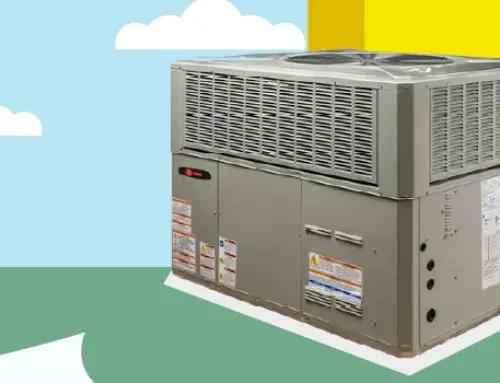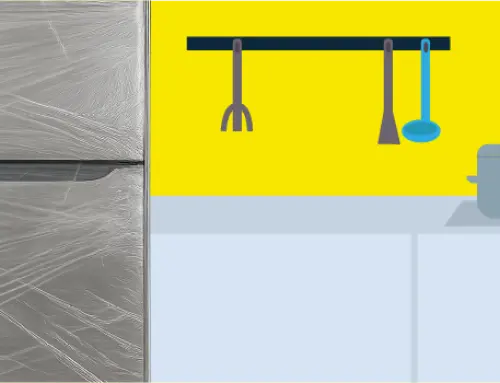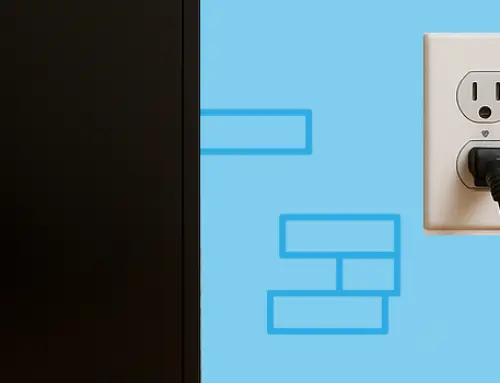Energy Choice for Renters: Can Renters Switch Energy Providers?
by Tyler Castle
19.5 min read

When you're renting, it might feel like you have limited control over your living expenses—but when it comes to energy, you may have more options than you think. The right energy plan could mean lower bills, better customer service, and more flexibility to align with your values. But can renters really switch energy suppliers? Keep reading to find out how your rental situation might give you more power than you realize.
Can You Change Energy Suppliers in a Rented Property?
In most cases, renters in deregulated energy markets can switch energy suppliers if they pay their energy bills directly to the supplier. In this case, you typically have the right to choose your supplier. Here are some factors to determine your eligibility for changing your energy supplier in a rented property:
- State Regulations: Energy choice availability varies by state; some states have deregulated markets allowing consumers to select their supplier, while others do not. It's essential to verify your state's stance on energy deregulation to understand your options. For example, states like Ohio, Illinois and Pennsylvania live in deregulated energy markets and therefore have the right to choose their energy provider from either a utility or an independent supplier.
- Lease Agreements: Review your lease for clauses that may restrict switching energy suppliers. Some agreements might specify a particular supplier or include utilities in the rent, limiting your ability to make changes. This depends on who you rent from so be sure to double-check if you're able to explore other energy options.
- Billing Arrangements: If utilities are included in your rent or managed by the landlord, your ability to switch suppliers may be limited. In such cases, the landlord typically controls the selection of the energy supplier.
Ultimately, you can change your energy supplier in a rented property if you live in a deregulated energy market, there's nothing in your lease agreement that restricts you from choosing your energy supplier, and if your utilities aren't managed by your landlord. Even if all these are true, as a safety, double check with the owner of your rental property to confirm this.
How Energy Deregulation Allows Renters to Choose Their Supplier
Energy deregulation gives consumers, including renters, the freedom to choose their electricity supplier rather than being limited to a single utility company.
In a regulated energy market, one utility company controls both the supply and delivery of electricity in a given area, leaving consumers with limited choices on their energy options to better fit their lifestyle and budget. Deregulation changes this by allowing multiple suppliers to compete for customers, often providing better pricing, plan options, and customer service due to the increased competition.
In deregulated states, suppliers purchase electricity or gas from the wholesale market and sell it to consumers at competitive rates, while the local utility company remains responsible for delivering the energy and maintaining infrastructure (like power lines and meters).
This system benefits consumers by offering more choices, encouraging lower rates, and improving service quality. Instead of being locked into a single supplier or committed to your local utility, renters and homeowners can shop around for better rates, incentives, and tailored plans that suit their needs for budget and lifestyle. This means they can:
- Find Competitive Rates – Instead of accepting whatever rate the default utility company charges, renters can compare suppliers and find the most cost-effective plan.
- Select a Plan That Fits Their Budget and Lifestyle – Some suppliers offer fixed-rate plans (stable rates), variable-rate plans (fluctuating rates that could be lower or higher at times) and unlimited plans to protect peace of mind all year long.
- Opt for Renewable Energy – Many suppliers offer 100% renewable energy plans or support renewable energy through buying Renewable Energy Credits (RECs) or carbon offsets, allowing renters to support sustainability with their energy choice.
- Get Better Customer Service – Some alternative suppliers offer better customer support and loyalty rewards, compared to traditional utility companies.
Before making a decision, research suppliers, compare rates, and read the terms carefully to ensure you're getting the best plan for your needs.
What If Your Landlord Pays Your Energy Bills? Can I as a Tenant Choose My Energy Supplier?
When the landlord manages and pays for utilities, tenants typically cannot switch suppliers. The landlord holds the contract with the energy supplier, making it challenging for tenants to change their energy supplier. Here's what you can do to work out an alternative plan with your landlord to control your energy needs:
- Discuss potential options with your landlord; they might be open to switching if it benefits both parties. Open communication can lead to mutually agreeable solutions regarding energy suppliers.
- Carefully review your lease for any clauses related to utilities and energy suppliers. Understanding these terms is crucial before attempting to switch suppliers.
- If unclear, seek clarification from your landlord or a legal advisor to understand your rights and responsibilities. This ensures that any actions taken are within the legal framework of your lease.
What If Your Rental Agreement Says That You Can't Switch?
If your tenancy agreement explicitly states that you cannot switch energy suppliers, your options are limited. However, there are a few things you can try:
The first thing you can do is to try to negotiate with your landlord. You can discuss your concerns with your landlord and explain the potential savings or benefits of switching energy suppliers. They may be willing to consider an exception if it aligns with their interests.
Sometimes, the wording of a lease can be vague or outdated. It's worth reviewing the terms carefully to ensure that there is no room for interpretation. If you're unsure, you may want to seek advice from a legal professional.
Can You Switch If You're Renting for Less Than a Year?
It is possible to switch energy suppliers if you're renting for less than a year but this all depends if your landlord or leasing agreement allows you to choose your energy supplier. If your landlord allows you to switch suppliers, be aware of a few considerations to keep in mind:
Some energy suppliers may offer contracts that suit short-term tenancies, such as month-to-month plans or shorter contract terms. You'll need to check if the terms of the new supplier align with your rental period.
If you switch and later move out before your contract ends, be mindful of any exit fees that might apply. Some energy suppliers have penalties for early termination, so it's important to weigh the savings from switching against these potential costs.
Lastly, even if your stay is short-term, switching suppliers could still result in savings on your energy bills. It's worth doing the math to see if it's financially beneficial for you, even for a limited time.
Can You Switch Energy Supplier Before You Move In?
You may be able to switch energy suppliers before moving into a rented property, but it depends on several factors.
For one, if the property doesn't yet have an active account with the energy supplier, or if you're setting up utilities under your name for the first time, you may have the opportunity to choose your supplier. This can be an excellent opportunity to find a plan that suits your energy needs.
If you're thinking of switching energy suppliers before you move in, you may need the landlord's consent if the property has already been connected to a utility service. Some landlords may prefer to keep the current energy supplier in place for ease of use and convenience so you should discuss this ahead of time.
As mentioned, you need to live in a deregulated market in order to switch to an energy supplier. If your area is deregulated, you have the right to choose your energy supplier regardless of when you move in. So, it's possible to switch before your move in date if you live in these states.
Pros and Cons of Switching Suppliers When Renting
Switching energy suppliers as a renter can offer both advantages and disadvantages. From plan flexibility of fitting your lifestyle to restrictions based on your lease agreement, knowing the pros and cons of your move is so important when it comes to your energy choice. Here's a detailed look at the potential benefits and drawbacks:
Pros of Switching Suppliers When Renting
- Plan Flexibility: Alternative suppliers often offer a variety of plans, including fixed-rate options and flat-fee (also known as Unlimited Energy) plans that provide stability and predictability in your monthly energy bill.
- Enhanced Customer Service: Some retail energy suppliers prioritize customer satisfaction, offering responsive support and additional features like online account management, which can lead to a better overall experience.
- Bundled Services: Some energy suppliers offer plans that bundle electricity with natural gas, simplifying your search and unlocking potential discounts.
- Your Energy Choices Can Make a Difference: Some energy suppliers support their local community through donating to local charities to support their community. This allows you to make a real impact while still getting the energy you need.
- Rewards Programs: Many energy suppliers offer exciting rewards, referral incentives, and bill credits, allowing renters to earn perks while staying on a competitive plan.
Cons of Switching Suppliers When Renting
- Hidden Fees: Certain suppliers may impose additional charges, such as early termination fees, enrollment fees, or monthly service charges, which can diminish your anticipated savings. It's crucial to read the fine print on your energy contract before making a switch.
- Variable Rates: Some energy suppliers offer energy plans that can be volatile to your budget. Most commonly, the rates associated with variable-rate plans fluctuate with market conditions, leading to unpredictable monthly bills. Renters should be cautious of variable-rate plans that may start with low introductory rates but increase over time leading to trouble with monthly budgeting.
- Lack of Transparency: Not all suppliers are transparent about their terms, and some may use misleading tactics to attract customers. Researching the supplier's reputation and reading customer reviews can help avoid potential pitfalls.
Other Considerations for Renters
Before switching, review your lease to ensure there are no clauses that restrict changing energy suppliers. Some landlords may specify or prefer certain suppliers.
Keep in mind that if your landlord includes utilities in your rent and manages the energy accounts, you may not have the authority to switch suppliers. In such cases, discuss potential options with your landlord. Lastly, be mindful of the length and conditions of any new energy contract, especially if you have a short-term lease. Aligning the contract duration with your tenancy can prevent complications.
How Does My Bill Change When I Switch Energy Suppliers as a Tenant?
Switching energy suppliers can lead to changes in pricing, billing structure, and fees depending on the plan you select. While your local utility company will still handle the delivery of electricity or gas, your supply charges will now come from the new supplier you choose. Understanding these changes can help you manage expectations and avoid surprises on your bill.
Your Supplier Charges Will Change
The biggest difference in your energy bill will be in the supply rate (measured in cents per kilowatt-hour for electricity or per therm for gas). Depending on which supplier you choose, it's very likely you won't be paying the same rate as your previous energy provider. This rate is known as your supply charge on your bill.
Your Utility Company Remains the Same
Even after switching to an energy supplier, your local utility company still delivers electricity or gas to your house or apartment and maintains infrastructure like power lines and meters. You will continue to see delivery charges from the utility company, which remain the same regardless of your supplier.
You May Receive Two Separate Bills (Depending on Your State and Supplier)
Some utilities consolidate the supply and delivery charges into one bill for convenience. Other times, you may receive two separate bills—one from your energy supplier and one from your local utility company for delivery. Before switching, ask your new supplier if you'll receive a single bill or separate bill.
Your Contract Terms May Introduce Additional Fees
Some energy suppliers charge monthly service fees or minimum usage fees, which could impact the total cost of your bill. If you break a contract with your previous supplier, you might see an early termination fee on your final bill.
What to Look for in Apartment Electricity Providers and Suppliers
First off, seek apartment electricity providers and suppliers that offer short-term, month-to-month, or no-contract plans if you're renting for less than a year. Avoid suppliers with high early termination fees or complicated contract structures.
If you're eligible to choose your electricity supplier for your apartment look for those that offer a diverse portfolio of plans. Look for plans that complement your budget and your overall goals for your home.
With your goals in mind, if being more kind to the planet is one of them, consider an apartment electricity provider and supplier that offers earth-friendly energy plans. For example, as an apartment electricity provider, Santanna Energy Services offers Earth-Friendly energy plans that supports renewable energy and offsetting carbon emissions.
Next, look for suppliers with a strong reputation for customer service, quick response times, and helpful support channels. Suppliers that offer online account management can be especially convenient for renters.
Also important, some suppliers offer bundled packages that combine electricity with natural gas or home protection services. This can simplify your search and unlock potential discounts. Check if the supplier offers loyalty programs, referral bonuses, or bill credits. These perks can add up to meaningful savings over time.
Look beyond price and do your research and choose companies that donate to their local community. This helps you know that the company you support with your business gives back to your community.
Another important quality to look for in apartment electricity providers and suppliers is transparency in their contracts. Carefully review the contract terms for any hidden fees, such as service charges, termination penalties, or minimum usage requirements. Transparent pricing ensures you know exactly what you're paying for.
How Santanna Energy Services Can Supply Your Rented Property's Electricity or Natural Gas
Finding an energy plan that fits your rental situation can feel overwhelming—but it doesn't have to be. If you're renting, you'll want a plan that's flexible, affordable, and easy to manage. Here's what Santanna can offer you:
- Short-Term Contracts: If you have a short-term lease, we have variety of contract lengths that may work for you.
- Plan Variety: We have plans that can fit your lifestyle and budgeting needs. Fixed-rate plans provide stable rates, which can help you avoid unexpected spikes in your bill. While our Unlimited Energy Plan gives you predictability with a stable monthly supply charge.* If reducing your carbon footprint matters to you, consider our Earth-Friendly energy plans. Earth-Friendly energy options support renewable energy initiatives and a neutral carbon footprint.
- Easy Setup and Management: We offer a straightforward sign-up process with no extra equipment needed to make the switch.
If you're ready to simplify your energy costs and take control of your plan, check out our available options here.
How to Determine If Switching Is Worth It When You're Renting
If you're renting, determining whether switching energy suppliers is worth it starts with reviewing your lease agreement. Some landlords handle energy contracts themselves, while others allow tenants to choose their supplier.
If you have the option to switch, compare energy plan lengths and prioritize short-term or month-to-month options that offer competitive rates. Additionally, check for early termination fees, especially if there's a chance you'll move before the contract ends. Finally, weigh the potential savings against any upfront costs or penalties to ensure switching makes financial sense in the long run.
How to Set Up Utilities When Renting
Getting electricity for an apartment and setting up other essential utilities is one of the most important steps when moving into a new place. Whether you're setting up electricity, water, gas, internet, or trash collection, it's crucial to ensure everything is activated before move-in day to avoid disruptions. Follow this step-by-step guide on how to set up utilities when renting:
- The first step to setting up setting up utilities when renting is to determine which services you need based on your lease and personal requirements. Start by reviewing your lease agreement to determine which utilities you need to set up independently and which are already covered by your landlord.
- If you're moving in for the first time and have the freedom to choose your energy supplier, look for available providers in your area, considering factors like rates and customer reviews. Compare factors such as pricing, contract terms, customer reviews, and green energy options to find the best deal.
- After you've chosen an apartment electricity provider, reach out or enroll online to initiate service setup, either online or via phone. Some companies allow same-day activation, while others require several business days, so it's important to check their processing times.
- The next step how to set up utilities when renting, is to arrange any required in-home installations or service activations. Luckily, most suppliers won't require any extra equipment with the set up when it comes to electricity. Certain utilities, such as internet, cable, and gas connections, may require a technician to visit your rental unit to complete the installation.
- Lastly, be sure to verify that all utilities are operational upon moving in. A day or two before moving in, confirm that all utilities have been activated by checking your account status or calling customer service.
How to Transfer Utilities When Renting
Transferring utilities when renting is a straightforward process. Here's how to transfer utilities when renting:
- The first thing you should do when transferring utilities is to review your lease agreement to determine which utilities you're responsible for and which are managed by your landlord. This helps you understand which utilities you're responsible for transferring if you need to find a new provider.
- Once you've figured out which utilities you're responsible for, gather your account numbers, billing addresses, and customer service contacts for all utilities you're transferring to start the process. Be sure to have your new rental address, move-in date, and any special property requirements (e.g., smart meter setup, building codes) ready when speaking with providers.
- Once you have your information, contact each utility provider at least two weeks before moving to notify them of your move-out date. In most cases, you'll need to request either a service termination if you are moving to an area they don't serve or a transfer of service if your provider operates in your new location. If you need new service providers, research and compare options for pricing, contract terms, and customer reviews before signing up.
- Once you've settled these details arrange for all essential utilities to be active on your move-in date to avoid any inconvenience. If you need any installations, be sure to schedule those early, as appointment availability may be limited, especially during peak moving seasons.
- The next step to transferring your utilities when renting is ensuring your new billing address and payment preferences are updated to avoid missed payments. Be sure to set up auto-pay so you don't miss a bill.
- As the last step before moving out, pay any remaining balances with your current utility providers to avoid penalties. Once services are active, check for emails or documents from your new providers with login details, service guidelines, and customer support contact information.
Are Utilities Included in the Rent?
It depends on the rental agreement. Some landlords include all or some utilities in the rent, while others require tenants to set up and pay for utilities separately. Utilities typically refer to essential services such as electricity, water, gas, sewer, and trash removal, though some rentals may also include internet and cable.
To determine whether utilities are included in your rent check your lease agreement to determine which utilities (if any) are covered by the landlord and in your rent. If the lease is unclear, confirm directly which utilities are included with your landlord or manager.
What Utilities Are Included in the Rent?
Understanding which utilities are included in your rent is crucial for budgeting and avoiding unexpected costs. While some rentals offer all-inclusive utility packages, others may require tenants to pay for certain services separately. Always verify with your landlord or property manager to ensure clarity before signing a lease.
Water and Sewer Services: Water usage and sewage fees are often included in the rent since these services are typically managed by the building owner or municipality. Some landlords charge a flat monthly fee for water, while others bundle it into the rent without a separate line item.
Trash Collection: In most apartments and rental homes, trash removal services are covered by the landlord or property management company. However, some buildings charge a separate waste disposal or valet trash fee, so check your lease for details.
Heating: If the building has a central heating system (e.g., boiler heating), the cost may be shared among all tenants and included in the rent. In some cases, heat is included, but tenants must still pay for electricity or gas to power their unit's individual HVAC system.
Electricity and Gas: These utilities are rarely included in the rent, but some landlords bundle them into the monthly payment, especially in small apartment buildings or single-bill setups. If submetering is used, tenants receive bills from a third-party company rather than the local utility provider, sometimes at higher rates.
Internet and Cable Services: Some landlords include basic internet and cable packages in the rent, particularly in large apartment complexes. However, premium internet speeds or additional cable channels often require separate tenant-paid subscriptions.
FAQ's
Can I switch energy suppliers without a home visit and without new equipment?
Yes, in most cases, switching energy suppliers does not require a home visit or new equipment installation. The existing infrastructure, such as meters and wiring, remains unchanged. The new supplier utilizes the same delivery system, ensuring no physical modifications are necessary. safetyculture.com
Can I switch energy suppliers before I move in?
Yes, as long as you have a Utility Account Number (UAN) from the local utility, you can arrange to switch energy suppliers before moving into a new property. Contact your chosen supplier ahead of your move-in date to confirm.
Is switching energy suppliers free?
Switching energy suppliers is generally free. However, if you are under a fixed-rate contract with your current supplier, you may incur an early termination fee for ending the contract prematurely. These fees can vary, so it's advisable to review your existing contract terms before making a switch.
Switching energy suppliers as a renter is more than just a cost-saving move—it's an opportunity to gain better service, lock in stable rates, and even choose renewable energy options. With deregulated energy markets offering multiple suppliers, you have the power to select a plan that fits your budget, lifestyle, and sustainability goals. At Santanna Energy Services, we make switching simple, seamless, and stress-free. If you're renting and wanting to explore your energy options, check our available plans here.
* Restrictions apply. Enrollment based upon program eligibility. Customers using more than 125% of normal monthly usage as determined by Santanna may be required to switch plans.
Tyler is an experienced energy professional, having worked for Santanna Energy Services, for the past four years. He is passionate about renewable energy and believes that diversifying the energy grid is the key to a sustainable future. Tyler is dedicated to supplying consumers with the best possible energy solutions and works diligently to make sure that Santanna can deliver the highest quality service.







